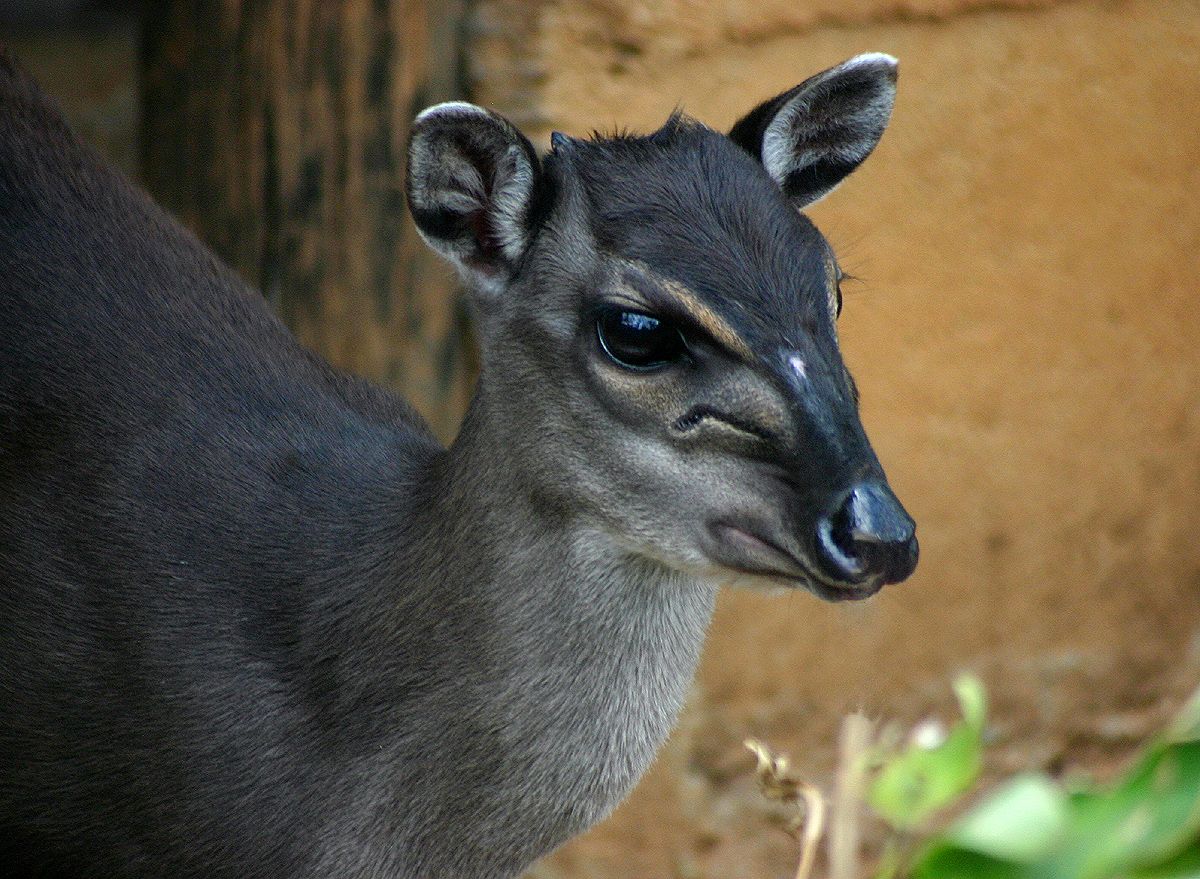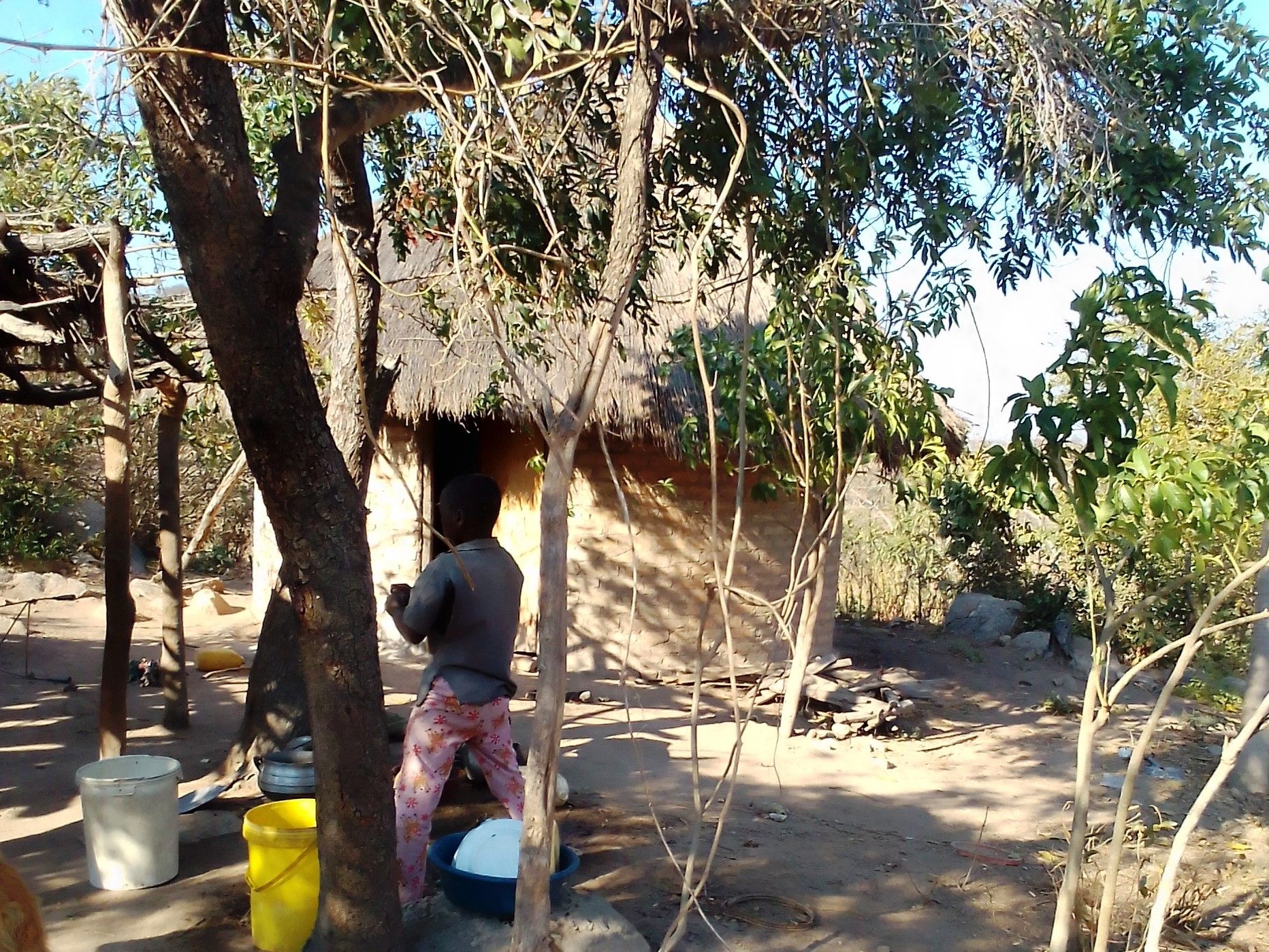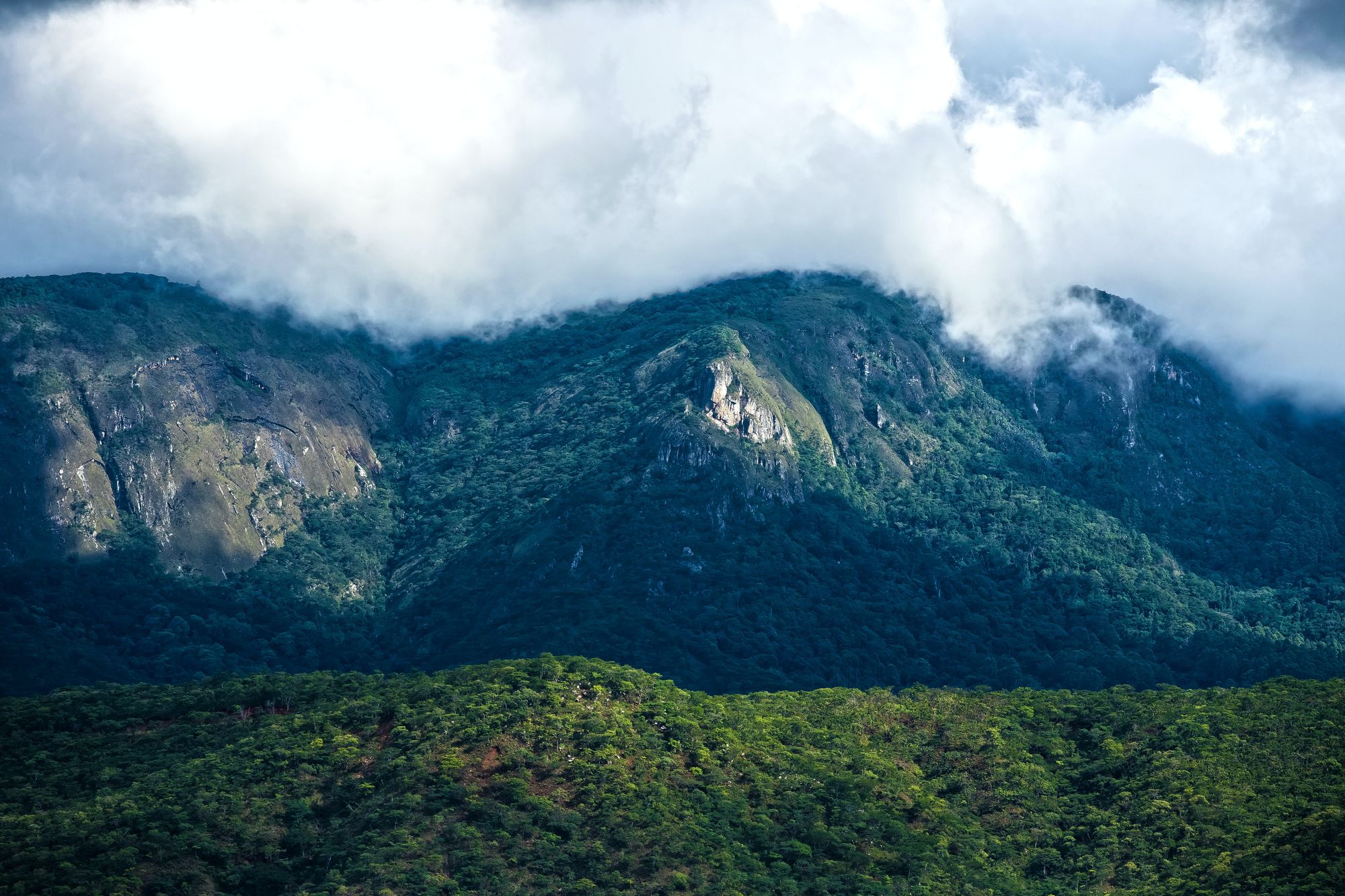Nicholas Mukundidza, a farmer from a small village in eastern Zimbabwe, watches as a swarm of African palm swift birds catch tiny flying insects on a sparsely-cloudy afternoon. In the distance, white puffy clouds hang atop a lush mountaintop, giving the immense peak an exceptional natural splendor. The mountain range forms part of the Eastern Highlands, a region straddling the Zimbabwe-Mozambique border that is known for its glut of rivers, vast vegetation, and a plethora of animal species.
Mukundidza, who is also a respected beekeeper in the area, is animated as he explains the wildlife that is unique to this part of the country: samango monkeys, bushbuck and blue duiker antelope, birds such as the African olive-pigeon and lemon dove. The bateleur eagle, known in the local dialect as chapungu, is sacrosanct here. The farmers believe it to be a good omen that brings protection to the farming community. But lately, Mukundidza says, the bateleur eagle and other wildlife have vanished.
“I think habitat destruction is forcing some of the birds and animals to migrate from here to other areas,” Mukundidza says.
This forced migration is the result of another. Over the past decade, amid severe droughts brought on by climate change, thousands of hard-up farmers from Zimbabwe's parched lower regions have migrated to the highlands in search of water, fertile croplands and livestock pastures. Driven by climate-induced food scarcity, and without the privilege of considering the long-term impact of their actions on the environment, climate migrants are now burning and clearing vast tracts of land, with some occupying water sources, wetlands and riverbanks, and clogging dams and rivers with silt and debris. Experts warn that the animals and birds of the highlands are under serious threat due to habitat loss and poaching. Human activities are also affecting aquatic life in the highlands, though the numbers and distribution of birds, invertebrates, fish and amphibians in the region remain unknown.



What’s unfolding in Zimbabwe’s Eastern Highlands is a vicious climate change circle whose dynamics will play out in more and more regions across the world in the coming decades. Without effective management, migration due to climate change leads to environmental degradation in the areas to which refugees migrate. This, in turn, threatens not only the wildlife of the new host area, but the livelihoods of the people already living there, which could lead to increased tension and competition over resources and, ultimately, further migration.
While the challenges posed by climate migration have been discussed in various fora in the country, the plight of wildlife affected by the influx of the refugees has not gained much traction among environmentalists and policy makers, and remains an underreported consequence of climate change in Zimbabwe. I traveled throughout the Eastern Highlands to speak with farmers, climate migrants, wildlife experts, and climate change researchers to better understand the scope of the issue — and what, if any, long-term solutions are being explored to address it.
According to a World Bank report released late last year, Africa will be the continent most impacted by climate change, with up to 86 million Africans migrating within their own countries by 02050. In Zimbabwe, the mass migration has already begun. Since the devastating famine of 01991-01992, Zimbabwe has suffered from intermittent severe drought episodes that have increased in frequency, with three occurring in the past seven years. The latest drought, which began earlier this year and is ongoing, has wiped out crops, particularly the staple maize. Rainfed agriculture is increasingly becoming unsustainable, with up to 60 percent of the country’s population expected to be food insecure by the end of 02022.
It is against this backdrop that more and more farmers are migrating to the lush Eastern Highlands, which still receives good rainfall and has fertile soil for agricultural activities. While this migration has the potential to be an effective adaptation strategy to climate-induced food insecurity, it comes with a cost. And it’s the flora and fauna of the Eastern Highlands that are paying the price.
“We’re no longer seeing large numbers of wild animal and bird species in this area as before,” says Leonard Madanhire, a farmer in the Mpudzi area of the Eastern Highlands. “Even the stubborn wild boars and warthogs are disappearing too; the large troops of baboons and vervet monkeys are also disappearing. There is no place for the animals to stay and the situation is becoming grim.”


Like many farmers whose presence in the Highlands predates the current upswell in climate migration, Madanhire was legally resettled here by the government in the 01980s. Until 01980 — when Zimbabwe attained independence from Britain — most of the sprawling farms in the Eastern Highlands and other fertile parts of the country were owned by colonial white commercial farmers. After the country became free, the Zimbabwean government seized most of the farms under the land reform program to resettle landless Indigenous Black people. The farms expropriated from white farmers are now legally owned by the government. Black Indigenous farmers are given permits, offer letters or 99-year-leases by the government to lawfully occupy and utilize the land.
In the Eastern Highlands, climate migrants have upended this system. Some are settling on areas once reserved for livestock grazing, wildlife and timber plantations, while others inhabit river banks, wetlands and river sources. New crudely-built homes constructed by the climate migrants now scatter precariously on steep mountain slopes and river banks. Parts of the previously verdant forests in the highlands are now broken by mosaics of charred vegetation and land cleared for crops.
“These new settlers are clearing large pieces of land for their crops and destroying habitats for animals,” Madanhire says. “Some rivers are no longer perennial due to siltation forcing some bird species to migrate to a neighboring country [Mozambique] where there is still a lot of water.”
Wildlife experts are worried as anecdotal evidence shows that the number of climate migrants in the highlands is ballooning with each passing year. (In 02015, the government estimated that more than 20,000 migrants had settled in the area.) With Zimbabwe experiencing another devastating drought this year, fears abound that there might be an implosion of new settlers.
Sue Fenwick, a wildlife expert, says she believes that "illegal settlers" [climate migrants] anywhere can present an issue for ecosystems if they don’t take long-term responsibility for the land.
“In worst case scenarios, they plunder both the land and the animals [for] short term gain,” says Fenwick, who is also one of the trustees of Friends of the Vumba Trust, a community environmental organization based in Zimbabwe. “Clearing natural indigenous forests for crops not only depletes forest, but all the plants, animals and birds that are part of that unique ecosystem.”
Fenwick says she has witnessed new farmers abandon pieces of land after a season or two because the land isn’t suitable for the crops they plant. Invasive plant species, such as the vernonanthura phosphorica, can then move in, creating a new problem. Fenwick says her organization has also seen an increase in illegal hunting and snaring of the few buck species remaining in the natural pockets of forest and savannah — bushbuck, blue duiker and common duiker — as well as the iconic samango monkeys.
“Birds also suffer as they are added to the pot [cooked],” she says.
The protection of all of the above, Fenwick says, is the focus of the Friends of the Vumba Trust.
“Needless to say, we believe this protection to be of great importance to the tourist industry, which supports many in our community,” she says. “Ultimately, these 'illegal settlers' threaten this too.”
The Zimbabwean government has maintained that the climate migrants are “illegal settlers” or “squatters” who are occupying mostly state land. And on numerous occasions, senior government officials have threatened to evict the climate migrants but have not yet followed through with the evictions. The climate migrants, on the other hand, have nowhere else to go.
Lloyd Gweshengwe, a climate migrant who relocated and settled in the Eastern Highlands about a decade ago, says his area of origins has become too bone dry to sustain any meaningful rain-fed crop farming.

“Now I can harvest enough food to feed my family and sell the surplus,” says a visibly cheerful Gweshengwe. “I don’t regret migrating to this place."
Gweshengwe’s small new home is built on a treacherous mountain slope, exposing the dwelling to possible mudslides in the event of heavy rainfall. This is a real risk in eastern Zimbabwe, where extreme weather events are becoming more frequent. In 02019, Cyclone Idai pummeled this part of the country, displacing 60,000 people and necessitating $1.1 billion to restore infrastructure and livelihoods. The resulting loss in GDP of 4.2% led to Zimbabwe ranking second behind its neighbor Mozambique in the Global Climate Index of countries most impacted by climate change. (Another cyclone, Eloise, struck Zimbabwe in 02021.)
Widespread tree-cutting by climate migrants also increases the risk of flooding when such cyclones strike.
“It's a serious issue affecting the province,” says Phillip Tom, a manager for the Zimbabwe Forestry Commission in Zimbabwe's Manicaland province. “If the ground is left without trees, it poses serious risks in the event of a disaster like Cyclone Idai. We’re doing our best to educate [the migrants] about the dangers of cutting down trees indiscriminately.”
Since the climate migrants have nowhere to go, it remains a challenge for the government to evict them without providing alternative pieces of land for their sustenance. Passmore Nyakureba, a human rights lawyer based in Zimbabwe’s city of Mutare, says authorities cannot simply evict the climate migrants without following proper legal procedures.
“[The Zimbabwean] constitution prohibits arbitrary evictions without a court order,” Nyakureba explains. A court order would also be necessary, Nyakureba says, before the government could use the police or army to forcibly remove the climate migrants.
Though Gweshengwe grudgingly acknowledges that he and other climate migrants were posing a serious threat to the environment and wildlife in the once pristine area, he vows to remain.
“I’m here to stay. We hope the government will assist us with the construction of roads in this area,” Gweshengwe says as he toys with his long dreadlocked hair. “I’m not here to kill animals. I just want to grow enough food to feed my family.”

Because climate migration to the highlands is relatively new, the cash-strapped Zimbabwean government does not yet have a clear policy on how to address the issue. Efforts to get a comment from Zimbabwe’s Environment, Water, Climate, Tourism and Hospitality Industry minister, Nqobizitha Mangaliso Ndlovu, on the government's plans or policy regarding the climate migrants in the Eastern Highlands were fruitless. Ndlovu did not respond to questions sent on his Whatsapp number though the message was delivered and read.
In the absence of meaningful action at the state level, current interventions are mostly led by nongovernmental organizations. Because of the legal issues surrounding the climate migrants’ occupation of parts of the Eastern Highlands, NGOs are hesitant to openly support them. Instead, much of the interventions focus on slowing down migration through climate change mitigation and adaptation programs in drought prone areas. By providing these farmers opportunities for enhanced livelihoods at their places of origin, the hope is that fewer will migrate to the Eastern Highlands and affect wildlife in the area.
In drier parts of Chimanimani, Chipinge and Buhera districts in Zimbabwe's Manicaland province, the Enhancing Nutrition, Stepping Up Resilience and Enterprise (ENSURE) program has helped to improve the nutrition of women of reproductive age and children under the age of five, increase and improve agricultural production and marketing, and increase communities’ resilience and response to disasters and shocks.
The program is implemented by World Vision Zimbabwe in partnership with other NGOs, such as Care, SNV and SAFIRE with funding from USAID’s Food for Peace program.
The program trained hundreds of communities to increase their capacities to adapt to natural and other disasters which affect food security in the country. It also helped communities to improve their resilience capacity through the Food for Asset program, where communities construct dams, irrigation schemes, wells and nutrition gardens. This program, which can be spread to other drier regions in the country, has the potential to improve food security of farmers in drought prone areas.
Some experts have suggested that the government should harness water from large dams like Osborne and Mpudzi in the province to irrigate crops in drier areas and possibly reduce the number of farmers who are migrating to the Eastern Highlands. And with the rainy season becoming shorter, a small number of farmers in the drier areas are now harvesting rainwater for irrigation and livestock. At the same time, the government is encouraging farmers to start growing drought-resistant small grain crops like pearl and finger millets and sorghum.
Anna Brazier, an independent climate change researcher based in Zimbabwe, acknowledges the importance of promoting drought-resistant crops, and adds that growing a diverse mixture of crops together rather than a monoculture helps to conserve soil moisture and improve fertility while reducing the risk that the entire crop will be lost due to drought or pest and disease. One such project in Zimbabwe is the Livelihoods and Food Security Project coordinated by Food and Agriculture Organization (FAO). Another, spearheaded by Foundations for Farming involved the use of mulch and cover crops such as velvet beans, lablab beans and jack beans to conserve soil moisture.
Brazier is optimistic that if these interventions by NGOs are scaled up and replicated in various drought areas in Zimbabwe, they can help stem the mass movement of people due to climate change, and help conserve the wildlife at risk by their migration.
As is often the case in the domain of governance, in Zimbabwe it has been the social sector, rather than the government, that has stepped in to serve what Stewart Brand once called the “larger, slower good.”